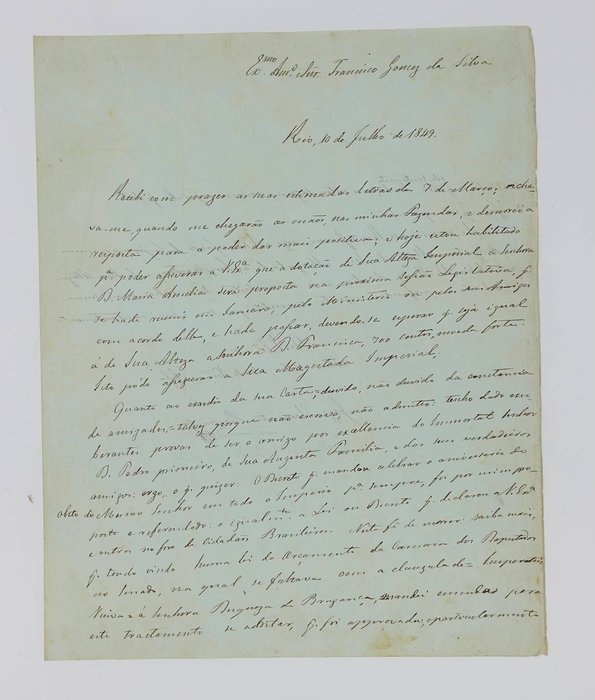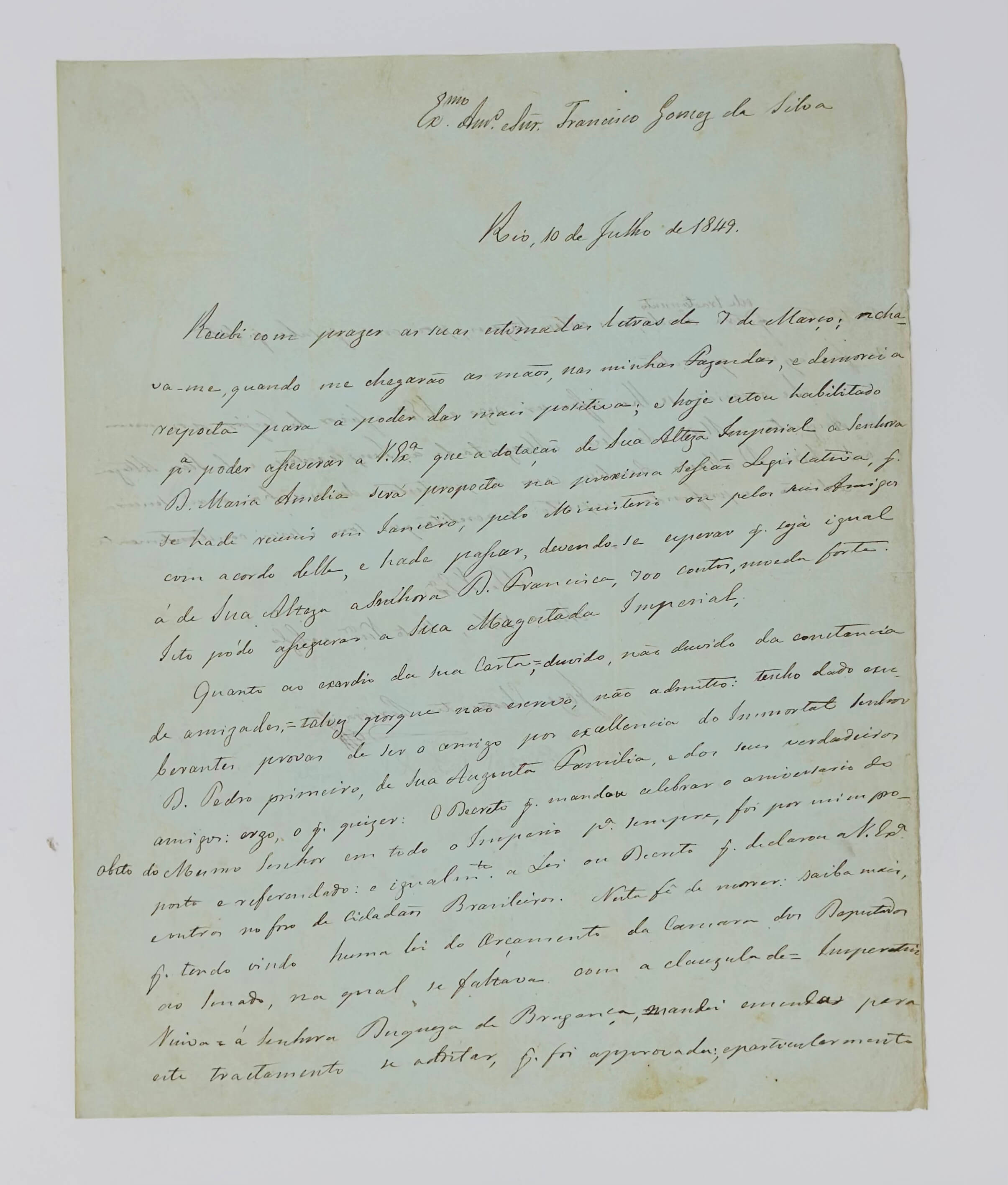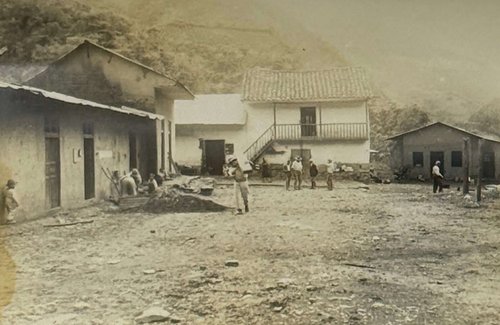

#MB32
1849
Large Quarto (ca. 27,5x22 cm). 2 pp., with an integral blank leaf. Brown ink on pale blue paper, text in Portuguese in a small, neat hand; docketed on verso of the second leaf. Blind stamp monogram of the paper factory in the upper left corner of the first leaf. Fold marks and minor creases, paper age toned, otherwise a very good letter.
In this letter of 1849, Pereira, a Brazilian official, tells Francisco Gomes da Silva, Secretário de Estado da Casa de Bragança, that he hopes to persuade the Brazilian parliament to approve a dowry for D. Maria Amelia, a Brazilian Princess, perhaps the same amount as her sister D. Francisca's ("700 contos, moeda forte"). The second part of the letter is a discussion of D. Maria Amelia's legal status.
Princess Maria Amelia (1831-1853), daughter of D. Pedro I and his second wife Amélie of Leuchtenberg, was born in France after D. Pedro had abdicated the throne in favor of D. Pedro II. Before Maria Amelia was a month old, her father set out to depose D. Miguel and restore the crown for his eldest daughter, D. Maria II. After D. Pedro died in 1834 of tuberculosis, D. Maria Amelia went to study in Munich and later to live in Portugal. Although she never met her half-brother D. Pedro II, when he was declared of age in 1840, he intervened to have D. Maria Amelia declared a member of the Brazilian imperial family. Since she was foreign born, the Brazilian government had refused to accept her status until that time.
José Clemente Pereira was one of the most enthusiastic promoters of Brazilian independence. In the first election for deputies, he was chosen to represent Rio de Janeiro, São Paulo, and Minas Gerais, and was chosen senator for Rio de Janeiro, Alagôas, and Pará.
This letter is addressed to Francisco Gomes da Silva (1791-1852), a close friend of D. Pedro I who emigrated from his native Lisbon to Brazil in 1807 and became a leader in the movement for Brazilian independence. He was one of several men considered by the Marquez de Barbacena to be anti-liberal, hence likely to subvert the Emperor's inclination toward constitutional government. In 1833 he was named Secretário de Estado da Casa de Bragança, a position he held until his death.
A few years after this letter was written, in early 1852, D. Maria Amelia was engaged to Archduke Maximilian of Austria; unlike most royal engagements, this one seems to have been based on a strong romantic relationship. Before the marriage could take place, however, D. Maria Amelia contracted scarlet fever, then tuberculosis. Although her mother took her to the healthy climate of Funchal, Madeira, the princess's health continued to decline, and she died unwed at age 21. She was buried in Portugal, but in 1982 her remains were transferred to Brazil, where they now lie with the rest of the Brazilian imperial family. In her memory, her mother funded the construction of a hospital in Funchal that bears her name.
Archduke Maximilian, visiting his deceased fiancée's brother D. Pedro II, was so impressed with Brazil's stability and prosperity that in 1864 he accepted an invitation to become emperor of Mexico. He was executed by a republican firing squad in 1867.
On Pereira, see Sacramento Blake IV, 384-6, and Grande enciclopédia XXI, 153. On Gomes da Silva, see Grande enciclopédia XII, 528-9.









